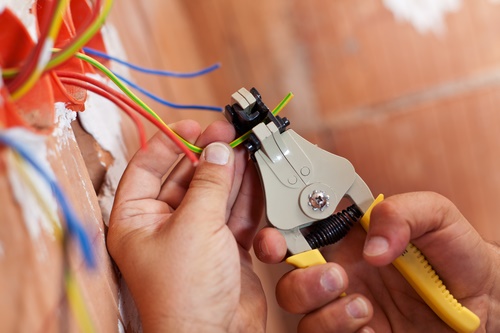Electrical Hazards need to be dealt with in a speedy manner and this includes aluminum wiring. Any electrician or insurance provider will tell you that replacement wiring is the preferred solution. Repairs are definitely possible, however.
It’s a rigorous task to clean up and retrofit every connection throughout the home, but doing so can save you the trouble of disturbing the walls and infrastructure of a vintage home. Like any wiring repair, this job must be left to a professional electrician.
First, here’s an explanation of why aluminum wiring poses fire hazards and other risks to your electrical system, home, and personal safety:
- Aluminum expands as it heats up, loosening the screws of its connection. Think Hulk breaking out of a cage.
- Corroded aluminum conducts electricity poorly, causing overheating that quickens the expansion problem.
- Electrical sparks move between the separated metal parts of a loose connection. The heat and sparks cause hazards ranging from melted wall outlets to extreme house fires.
- People use more electricity than the time when aluminum wiring was installed fifty years ago. Today’s heavier loads speed up the problems of aluminum connections.

Electrical Hazards – Repairing Corroded Aluminum Wiring
If you decide to keep your aluminum wiring instead of replacing it entirely, an electrician will need to clean up the corrosion. This involves disconnecting the aluminum wires at every terminal — the service panel, light switches, outlets, ceiling fans, and anywhere else.
Once disconnected, the electrician will physically scrape away the aluminum oxide corrosion in a process called abrasion. The wire then receives an antioxidant treatment to help prevent corrosion. Then the connections get retrofitted with special connections that prevent the expansion and corrosion process.
Outlet receptacles and other equipment may also need to be replaced if already melted or burned.
Aluminum–Copper Connectors
Products such as Copalum and AlumiConn are available to make electrical connections safe while leaving aluminum wiring in place.
Copper-to-aluminum connections work like an adapter plug or transformer. The aluminum wire enters the connector, and copper connects from the connector to the outlet or other device.
These connectors are designed to prevent oxidation and thermal expansion. Remember, aluminum can be a safe conductor for electricity — the problem is not the wire itself, but the connections. After retrofitting, your outlets and switches will effectively have copper wire connections so the sparking and fire risks are virtually the same as with full copper wiring.
Tips for Safe Aluminum Wiring Repairs
Repairing aluminum connections may sound simple, but it requires a specific set of tools and expertise. Some products such as “twist-on” connectors have been proven to be unsuitable fixes. And even the best connectors must be precisely installed with exact torque settings in order to maintain effectiveness for many years.
Keep these thoughts in mind when scouting your options and hiring an electrician to repair aluminum wiring:
- Do not DIY this one. Wiring work is dangerous and requires professional experience. The repairs must be made perfectly at every connection, not overlooking a single outlet or switch.
- Replacement costs more than repair, but repair does cost a few thousand dollars. Opt for replacement if at all possible.
- Get the entire wiring system inspected before making repairs. Existing damage or unrelated wiring problems may make replacement even more necessary.
- Talk to your insurance company about whether certain repair methods will satisfy their requirements for insuring homes with aluminum wiring.
Contact us today to get started with an inspection and repair recommendation for aluminum wiring!

